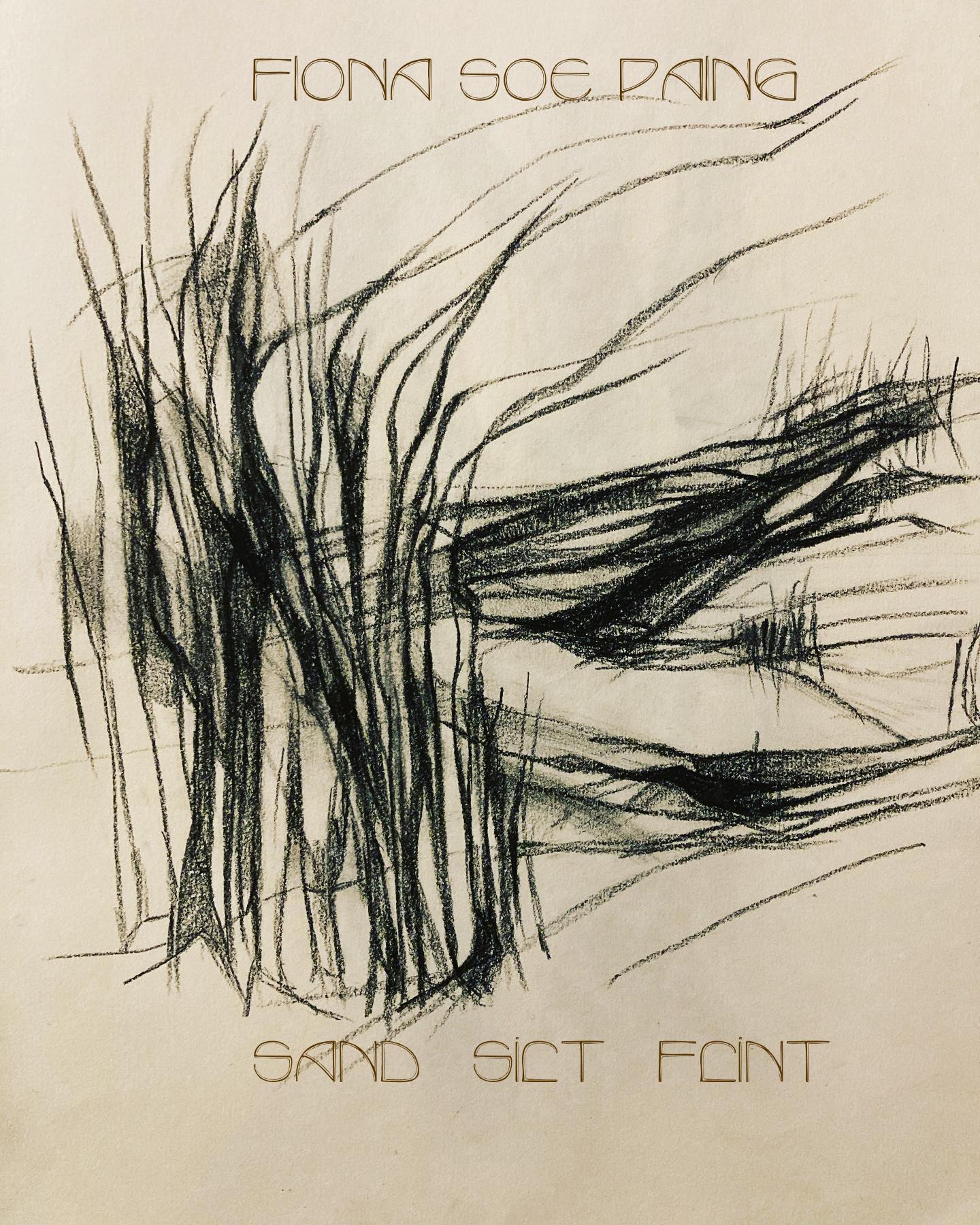SAND, SILT, FLINT. FORVIE WALK
room 9 ECHOES
Location: Ellon, Aberdeenshire, Scotland, United Kingdom
Created by Aberdeenshire musician Fiona Soe Paing, with an accompanying short film by Dudendance Theatre, with support from Help Musicians UK Fusion Fund and Creative Scotland. The walk begins at the Forvie National Nature Reserve Visitor Centre and is one of a series of trails mapped out across the reserve. This walk leads from the gate at the visitor centre and follows the Heath Trail which is illustrated by waymarkers showing a white four-leaf clover set against a red background. This circular trail leads from the visitor centre and loops through heathland and dunes in the north of the reserve. This option leads a 1.4 mile loop into the reserve and skirts along the end of the Sand Loch. (On completion of the walk, make your way to the Visitor's Centre -to the Fire Exit door on the left- to view the stunning short film created for the music by award-winning performing arts company Dudendance.)
Before setting out take a moment to run your fingers through the Living Wall, a vertical garden beside the entrance to the visitor centre filled with pollinator-friendly plants and flowers perfect for the surrounding landscape. Once the sounds and views of the visitor centre have faded, the slow, sandy landscape becomes disorientating. It’s easy to lose a sense of time and direction and the sound and smell of the sea to the east is the easiest way to orientate yourself. Look up for low flying sea birds and wide open skies. And look out for heather, crowberry, lichen, staghorn clubmoss and low cut willow trees, as well as wild flowers during late spring and early summer.
The path includes sections of gravel, sand and grass, with parts closer to the visitor centre better for buggies and walking sticks. Some later sections cover uneven ground and undulate across the landscape in places. Smaller sand tracks crisscross into and across the dunes for the more adventurous to explore. Wet weather turns the trail muddy in places and sections of the longer walk can become flooded. But on these days you can also breathe in the pungent smell of earth and sand. Ice on the paths can be a hazard in chilly deep winter. On windy days a keen breeze cuts across the dunes from the North Sea, spinning through the blades of a small wind turbine adjacent to the visitor centre. On these days it’s easy imagine the wild storm that smothered the village that once settled here, its church, lives and livelihoods, with unstoppable sand.
“Let nought be funde in Forvie’s glebe but thistle, bent and sand.”
Forvie boasts some of Britain’s largest sand dunes and although a wild, uninhabited landscape today, it was once home to one of a series of small settlements that grew along Scotland’s north east coast supported by fishing and farming. The community laid roots down around a small stream that cuts through the centre of the reserve and meets the sea at Rockend. Over the course of time the dunes at Forive have stabilized as grass and heather took root, but centuries ago the sands shifted with wind and tide.
Finally beaten by advancing dunes, the settlement was abandoned in the early 1400s. The only building to survive is the village church whose ruins date back to the 12th century and stand on the site of an earlier 8th century chapel. Little is known about the settlement and how long it took to surrender to restless sands, but local legend tells of a swift demise.
Two versions of the curse that called forth the mighty storm that engulfed the village exist. The first spins a sinister tale of a demon priest responsible for the disappearance of young girls. Once the villagers discovered his dark ways he summoned a storm to destroy the settlement and enable his escape, leaving nothing but the top of the church remaining. The other claims three sisters raised the storm in a curse on the village after being driven out to sea in a leaky boat in an attempt to deny them their inheritance after the death of their father the Laird. Their storm raged for nine days and nights and buried everything in sight in sand.
Legend aside, what is known is the meteorological records from August 1413 which detail extreme tides and high winds that blew sand from the surrounding beach into a huge dune possibly fulfilling the sisters’ curse, “Let nought be funde in Forvie’s glebe but thistle, bent and sand.”
The alternative route follows a 2.1 mile loop deeper into the landscape and sea cliffs. The longer option rewards with wide sea views with Aberdeen to the south, Collieston to the north and off shore wind turbines to the east.
Practical Information
Getting There FORVIE VISITOR CENTRE, COLLIESTON, AB41 8RU Forive National Nature Reserve is approximately 16 miles north of Aberdeen. If you are driving, take the A90 north out of Aberdeen and then turn onto the A975 to Cruden Bay. The visitor centre car park is about three miles north of Newburgh. Once past Newburgh turn right at the Collieston crossroads from here the visitor centre is signposted. If you are taking public transport, Stagecoach operate buses between Aberdeen and Peterhead which stop at both Newburgh and the Collieston crossroads. It’s a 20 minute walk to the visitor centre from the crossroads.
Visitor Centre Forive Visitor Centre is open daily from April to September and is full of information about the nature reserve including tactile exhibits.
Toilets Accessible toilets are located inside the visitor centre, other public use toilets can be found at Collieston harbour to the north, or in Newburgh at the Newburgh Inn.
Refreshments Wheelchair accessible picnic tables are located in the grounds around the visitor centre and overlooking the Sand Loch. The nearest place for eat in food is the Newburgh Inn.
Wildlife Warning Do not disturb breeding or roosting birds or the seals who haul out on the shore along this coast. Dogs must be kept on leads during nesting season (April to July). ----- Produced by OpenRoadLtd.com in association with NatureScot. Music by FionaSoePaing.co.uk Film by Dudendance.com Mixed by Jamie Smith at St Mary's Space Studio Image "Sand dunes grass" by Fi Thomson Text for Echoes app researched and written by Lesley Anne Rose at Open Road Ltd, with thanks. Supported by Help Musicians UK and Creative Scotland With thanks to the Elphinstone institute of the University of Aberdeen,
The Echoes

Echo 1

Echo 2

Echo3

Echo 4

Echo 5

Echo 6

Echo 8

Echo 7

Echo 9
Discover more geolocated content in our apps.
Or start creating tours, treasure hunts, POI maps... Just let your imagination guide you.